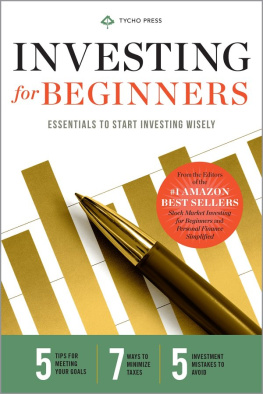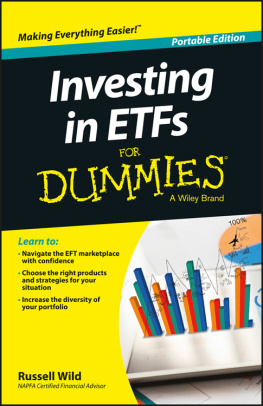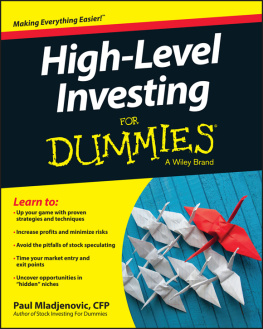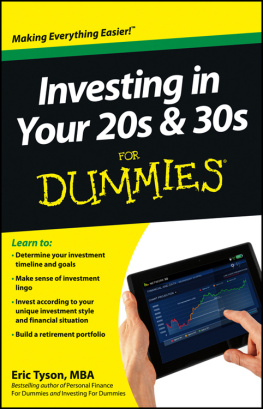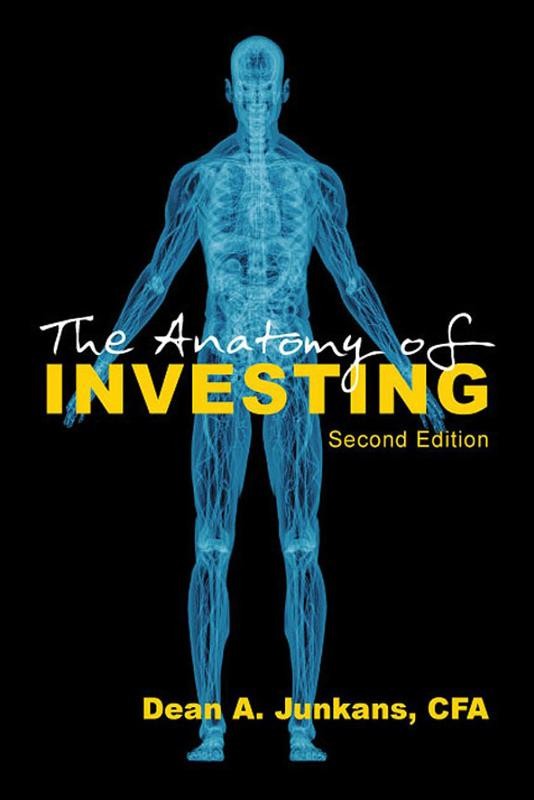
The Anatomy of Investing
Second Edition
Dean A. Junkans
ANATOMY:The art of separating or dividing something into parts for detailed examination.
INVESTING:The act of committing (money) in order to earn a financial return.

Strategic Book Publishing and Rights Co.
Copyright 2012
All rights reserved Dean A. Junkans
No part of this book may be reproduced or transmitted in any form or by any means, graphic, electronic, or mechanical, including photocopying, recording, taping, or by any information storage retrieval system, without the permission, in writing, from the publisher.
Strategic Book Publishing and Rights Co.
12620 FM 1960, Suite A4-507
Houston, TX 77065
www.sbpra.com
ISBN: 978-1-62212-542-5
Typography and page composition by J. K. Eckert & Company
Endorsements
As a business owner, I value wisdom based on simplification of great knowledge and experience into practical advice for decision-making. This book provides true wisdom. I highly recommend The Anatomy of Investing which provides an overall understanding of investing in understandable terms and a how to reference guide for all stages of investingit will pay high dividends for your time and investment.
Thomas Mungavan, President,
Change Masters, Incorporated
An investment book made understandable to all with a marvelous unique analogy between physical health and financial health! It provides great insight for those who believe they are investment immortal to those who see only investment risk. It gives the reader preventive medicines, an ongoing prescription and the latest technological breakthroughs for lifelong portfolio health! Just like the New York Times, Dean Junkans has written all about investing thats Fit to print!
Jim Paulsen, Ph.D., Chief Investment Strategist,
Wells Capital Management
Using the anatomy analogy, Junkans is able to clearly explain serious investment truths in a creative and entertaining way to the benefit of novices and pros. This is excellent teaching from a real leader in the investment profession.
Kevin D. Freeman, CFA, CEO Freeman Global
Investment Counsel and co-author of
Investing in Separate Accounts
This book is easily one of the best and most readable investment primers Ive come across during my 45 years in the business. Its a great way to learn about basic investment concepts and how they can be applied to almost anyones situation.
William B. Frels, CFA, Chairman and CEO,
Mairs and Power
If only I had access to your book when I got my first job, I know I could have done much better with my investments. This book should be read by anyone who wants an easy to understand, interesting and practical guide to investing.
I am going to give a copy to my daughter!
Kjell R. Knudsen, Ph.D., Dean, Labovitz School of
Business and Economics, University of Minnesota Duluth
The Anatomy of Investing is a full-bodied tour of the ins and outs of planning for ones financial future and avoiding the vast number of pitfalls that face individual investors every day. Uncluttered by finance-speak and thoughtfully organized, Dean brings to his subject a wealth of experience and practical advice. From beginning to end, its clear that he cares deeply about both his subject and the everyday investors hes trying to help.
Tony Carideo, CFA, President, The Carideo Group, Inc.
Dean Junkans has been a key thought leader for us on investment strategy and asset allocation for many years. Now everyone can benefit from his well thought out views on investing. The Anatomy of Investing is a terrific resource for anyone interested in learning more about the foundation of successful investing. Ignore the promises made by those who advocate the home run trades to riches approach. This book will equip the reader with the understanding and right tools to build a sound and diversified investment decision making approach which has been the hallmark of the industrys best money managers.
Jay Welker, Executive Vice President and Head of the
Wealth Management Group at Wells Fargo
Contents
Foreword
Acknowledgments
Introduction
Chapter 1Learning to Walk: The Difference Between Saving and Investing
Chapter 2Self-Discovery: The Development of Investment Goals
Chapter 3The Spine: The Backbone of Your Portfolio
Chapter 4The Brain: Right Brain and Left Brain Roles in Investing
Chapter 5The Eyes: Investing by Looking Forward
Chapter 6The Ears: Listening Selectively and Avoiding Investment Information Overload
Chapter 7The Nose: Sniffing Out the Impact of Your Investment Environment
Chapter 8The Mouth and Stomach: Investment Portion Size and the Four Basic Food Groups of Investments
Chapter 9The Neck: Portfolio Flexibility
Chapter 10The Heart: Keep Your Portfolio Pumping!
Chapter 11The Lungs and Kidneys: Breathing New Life into Your Portfolio
Chapter 12The Arms and Legs: Portfolio Construction and Investment Vehicles
Chapter 13The Annual Physical: The Annual Portfolio Review
Chapter 14The Importance of Strong Bones: Zigs and Zags
Chapter 15Choosing Your Doctor: Selecting the Right Investment Advisor
Chapter 16Discipline: Good for the Body, Good for the Portfolio
Chapter 17Are You Only Eating American Food? The Case for International Investing
Chapter 18Staying Out of Trouble: Risk Control Strategies for the Individual Investor
Chapter 19Everybody Has His or Her Own Style: Should Investors Have Their Own Style, Too?
Chapter 20How Do You Know You Need a Hip Replacement? Or, When to Sell, When to Buy, and When to Do Nothing?
Chapter 21Next Steps: The Checklist
Chapter 22Summary of Healthy Investment Tips
Appendix ILife Stages Investing
Appendix IICase Studies
Appendix IIISources of Recommended Online Investor Education and Advisor Information Websites
Appendix IVSample Investment Policy Statement
Appendix VSummary Page of Rebalancing Studies
Appendix VISample Risk Tolerance Questionnaire
Appendix VIIAsset Class Returns by Holding Period
Appendix VIIISummary of Retirement Vehicles
Appendix IXComponents of International and Emerging Markets Indices
Appendix XGlossary of Investment Terminology
About the Author
Note to the Reader
Foreword
By Joel Larson, MD
The human body is a sophisticated, highly integrated composition of unique organ systems. These organ systems work together reacting to changing conditions in order to optimize the bodys health, well-being and performance. We all have a basic understanding of these individual organ systems and the role they play in our bodys homeostasis. The author has used this basic knowledge of human anatomy and physiology as an analogy to the unique features (organ systems) of a healthy financial portfolio. By doing so the author has created a process of sharing and teaching financial planning that is both simple and entertaining. I found myself curious about which organ system would represent which part of a financial portfolio and how well the analogy would work as a teaching tool. I welcomed with anticipation the portfolio priorities comparing them with the importance of an organ system always realizing that all organ systems were necessary for an optimally functioning body.
Next page
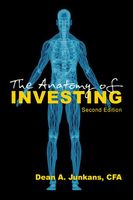
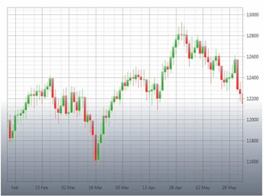

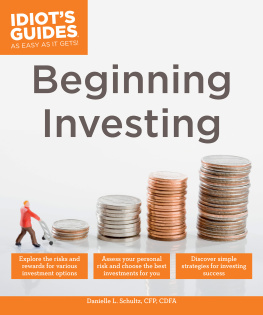
![Katherine Collins [Katherine Collins] - The Nature of Investing: Resilient Investment Strategies through Biomimicry](/uploads/posts/book/124125/thumbs/katherine-collins-katherine-collins-the-nature.jpg)
